- Home
- T. Jefferson Parker
Laguna Heat Page 2
Laguna Heat Read online
Page 2
“Grimes, take the houses to the west. Lydia, you take the ones east. Wake up the neighbors and find out if they saw or heard anything.”
Grimes grunted and pushed off the car. Lydia accepted a cigarette from Shephard and lit it with a still-shaking hand. “I’m not used to this.” She smiled weakly. “I talked to Tim Algernon five days ago, and now I can’t be sure that’s even him. If it is Tim, I can tell you he lived alone and has a daughter in town. Jane. He’s owned the stables for a long time. He’d rent the horses for rides in the hills. Last week he told me he’d finally retired and sold off all the horses except one. A favorite mare.”
At the far end of the driveway, the exit end for cars leaving the stables, Shephard looked for fresh tire tracks. But the gravel was well-worn, and the faint signs of travel could have been a week old or an hour new.
Outside the barn, the nicked boot again. One set of prints going into the open barn door, the same set coming back out. Shephard stepped inside. A light bulb burned overhead, halfway down the double row of stalls. The musty smell of hay and dung lingered, ingrained by now, he thought, into the wood itself. The silence inside was broken only by the muted hiss of cars heading out Laguna Canyon Road. He noted that the nameplates on the stall doors had been recently removed. Fresher paint was underneath, and screw holes were torn in the wood. Severing his sentimental attachments, Shephard thought. Like when he had taken down the pictures of Louise after their divorce. Only the nameplate on the first stall remained: BECKY. The favorite mare, no doubt.
Shephard discovered that the tack wall was empty. A complete sale, he thought. But wouldn’t he have saved a saddle, bit, and harness for Becky? He found no riding gear anywhere in the barn.
Back outside, the fresh morning sun made his eyes ache. Paralleling more bootprints toward the corral, Shephard stopped at a patch of moist clay under a pepper tree and found what he was looking for. The right bootprint bore the nicked heel.
He returned to the body and stood over it, sensing the almost tangible aura that separates the dead from the living. He felt clumsy and out of place, like a tourist in a country where his customs and language don’t apply.
From where he stood, Shephard could see the bootprints from the barn leading toward the corral. They ended at the now-open gate, obliterated by the deeper prints of hooves. Becky, he thought, a retired cowboy’s pension. The animal had taken a wide circle around the dead man—spooked by the flames, Shephard assumed—then angled off toward an embankment behind the house. Her hooves had cut deep into the bank, then down to a wide stream bottom where the dry weeks of summer had reduced the water to a brackish slick. With the sun working steadily on his neck and mosquitoes whining in his ears, Shephard followed the tracks until they climbed up the opposite bank, continued west, and disappeared into a stand of scrub oak.
Not twenty yards away stood the saddled horse, idly eyeing the detective.
Beyond the oak lay a dense grove of eucalyptus. And beyond the eucalyptus, a ten-minute ride across the dry hills, lay the city.
TWO
The Orange County Coroner’s facility is housed in a drab square building in Santa Ana, the only pretense at cheer being an orange band of paint that winds around it like a gift-box ribbon. The deputy medical examiner introduced himself as Glen Yee, then led Shephard down a clinical hallway toward a set of recessed double doors.
“Shephard, from Los Angeles?” he asked casually. Yee was short, primly dressed, and vaguely oriental
“Right,” Shephard answered, bracing himself for the inevitable condescension.
“Very unfair the way the press treats you in law enforcement. But welcome to Orange County. I grew up here, not far from Disneyland. When I was ten, this was a quiet little county filled with orange trees and political conservatives. But it isn’t so quiet any more. Interesting, I think, that three of the first six men executed since the reinstatement of the death penalty grew up in Orange County. A modern place with modern problems,” he said, shooting Shephard a concerned glance. “And we now have a modern forensic facility to help solve them.” Shephard noted the pride in Yee’s voice, the tone of a future administrator. “We built the facility one year ago. Before that, we shopped the bodies out to local mortuaries, and our examiners made house calls, so to speak. At a hundred dollars each, we ran up quite a bill.”
“How much was all this?”
“About twelve million, but a money-saver in the long run. Frankly, I think the success of ‘Quincy’ helped us pass the bond. This, for instance, is a fine feature.”
Yee stopped about six feet from the doors and tapped his toe on a narrow black line. The doors slid open and waited. “The electric eye is positioned exactly one gurney-length away. The only doors in the county designed to be opened by the dead.” Yee chuckled politely. Shephard lit a cigarette and stepped in.
White tile and formaldehyde, draped sheets, gray feet. The bodies were neatly lined along the wall in front of him while technicians worked busily at a counter opposite. Four high-intensity lamps hung at intervals from the ceiling, under which four tables offered bodies to the light of forensic science. Yee led Shephard past the first three. Drained of blood to a pale gray, chests open, staggered with factory-line precision across the room, the bodies struck Shephard as more automotive than human. Yee stopped at the last one, which was covered, and produced a clipboard.
“Tim Algernon, age sixty-four, male Caucasian. The dental check was easy because we had a name and not many dentists in Laguna Beach. Anyway, he was in good health until about five hours ago. At around six A.M. he died of a massive brain hemorrhage caused by the introduction of a foreign body through the frontal lobe. The foreign body appears to be a piece of common basaltic formation, but Robbins can tell you better than I can. In my opinion a fall, even a complete unconscious fall, could not have caused the kind of penetration we have here. I don’t even think a rock that size could have been thrown through the frontal lobe. In short, it appears to me that someone literally bashed his brains out. Would you like to see?”
“No, but I will.”
The head’s features were indecipherable. Yee replaced the sheet.
“The body is seventy percent covered with third-degree burns,” he continued, stopping to run a thin hand through his black hair. “Basically every part of him not touching the ground, except for the bottoms of his feet. Ask Robbins again, he knows burns. I can tell you that Algernon hosted the fire, which implies an accelerant was used. Human skin of course is both porous and fire resistant, a trait shared by most green plants, incidentally. By resistant I mean that flame will not spread naturally.” Yee interrupted his monologue to wink at someone across the room. Shephard turned in time to see a pretty blond woman re-bury her arms in a corpse.
“Now, we found something truly interesting here, detective. Lodged in the esophagus below the epiglottis were four collections of American currency. Twenty-two bills, totaling nine hundred and ninety dollars. Given the mint condition of the bills, I’d say he ate or was forced to eat them shortly before he died. Strange.” Yee set down the clipboard and crossed his arms. His black eyebrows contracted thoughtfully.
“How much alcohol had he drunk?”
A trace of worry flitted across Yee’s smooth face. “We didn’t test blood alcohol. Generally—”
“Please do. You may find some in the stomach, too.”
“Stop by after you see Robbins. I’ll have your levels.” The deputy medical examiner offered his hand and smiled.
“Thanks, doc. The new shop’s a real dazzler.”
“Welcome to Orange County, detective. I hope you receive better treatment here than you did in Los Angeles.”
Better treatment, Shephard thought as he climbed the stairs to the research lab. Like he was being transferred from one hospital to the next. The face of Morris Mumford flashed inside his brain, then vanished.
Forensic specialist Ken Robbins was a dramatic counterpoint to the oriental preciseness of Yee. He stared
at Shephard with puffy, red-rimmed eyes and wiped his glasses on a dirty lab coat. His head was large and block-shaped, covered with a mass of gray hair. Robbins dismissed formalities with western flair.
“Weird shit, Shephard,” he said. “You’re the reverend’s son?”
“Right.”
“Well, whoever engineered this little killing doesn’t have much interest in our sweet Lord Jesus.” The Bible in Shephard’s pocket suggested the contrary, but the point didn’t seem worth making yet. Robbins pumped Shephard’s hand with easy power.
“What was the accelerant?” Shephard asked.
“You know burns?”
“A little.”
“The accelerant was turpentine. Liberal doses. You probably saw that he was burned head to toe, front side. Flesh won’t conduct flame on its own, so our man used turpentine. A good choice because it’s cheap, easy to get around here, and it burns like hell.”
“Nice comparison,” Shephard said. “Turpentine is used to thin paints and lacquers. What else?”
“Got me, Shephard. All I know is dead people and what makes ’em that way. In this case, what actually made this Algernon fellow dead was a twenty-ounce hunk of basalt punched through his head. There she is.” Robbins nodded to the triangular slab of rock that rested on a table beside an imposing microscope. The rock was fist-sized, sharp-edged, unremarkable.
“Common around here?”
“That’s what the books say. Coughed up by ancient volcanoes and spread around by quakes and drifts. A rock is a rock. But those hair specimens you brought in might be a gold mine.” Robbins pointed to the microscope and switched it on. Shephard bent down and peered through the eyepiece, adjusting the focus. Magnified, the hairs looked like the trunks of redwoods, complete with bark. Two such redwoods angled through the left side of the image area, while to the right rested a fat ring the apparent size and shape of a Cheerio. “On the left are two hairs from the collection you sent me. On the right is a cross-section from a third. The round center indicates straight hair. Oval center would indicate curly. You can’t tell because of the lighting down there, but the hairs, all of them, follow a black-to-gray color pattern. Keep your eye on the hairs while I up the power and tell me what you see.”
Shephard watched as the specimens tripled in size, their dull red tone fading still more with the higher magnification. “They got bigger.”
“No shit. What else?”
“Mounds. Little mounds on them.”
“Know what they are? Tocopherol acetate. More commonly known as vitamin E. If you use good conditioner on your hair, you probably have those blobs, too. That’s the point, not everybody does. Did you get these specimens from a suspect?”
“Unless Algernon pulled out his own hair.”
“Then you’re looking for a man old enough to have gray hair, and I don’t mean a streak or two. The original color was black, not brown. Jet black. Not a Viet Cong, either. The protein analysis says Caucasian all the way. His blood type is O. And he conditions his hair with something containing tocopherol acetate.”
“That would make it an expensive product,” Shephard noted, recalling that the contents of his own cheapish conditioner made a long paragraph on the label. And no vitamin E.
“And cheap people don’t buy conditioner at all. Next.”
Robbins slid out the specimen glass and inserted another, then turned down the power. Shephard regarded the single tree trunk-like object, which was thicker, darker, and much smoother than the first. One end tapered to a nearly perfect point, the other was truncated cleanly. Midway, it was dented.
“What you’re looking at is a camel’s hair, believe it or not.” Shephard entertained a brief and irrelevant vision of the killer arriving on the back of a camel. “It was in with the human hair. My first thought was a hairbrush. But it’s much too thin.”
“And why the tapered end?”
“Exactly my question. I was thinking it got pulled out of a sports jacket or a sweater.”
Shephard turned up the power and watched the hair grow. More mounds. “But who would condition a jacket?”
“What?”
Shephard backed away and let Robbins study the camel hair.
“No shit. Didn’t think to crank it up that high.” Robbins stood and shook his head slowly. “You got me. And you got me on this, too.” He replaced the specimen slide with still another.
Shephard gazed through the eyepiece at a stunningly beautiful sliver of blue. It was dark and rich as lapis lazuli. “Looks like a gem,” he said.
“It’s a cobalt compound,” Robbins corrected.
Shephard looked again at the bright slash of blue. “Is it radioactive?”
“Give me another hour, I’ll tell you.”
“What’s it doing in a man’s hair?”
“That’s your job, dick. Maybe he takes nuclear shampoos. I just dig the treasures, you spend ’em how you see fit. I’m still working on the fabric from his shirt, the dirt under his nails, some other angles. Fire doesn’t leave us much to go on.”
“It’s a start. The killer rides a conditioned camel and washes his own hair with cobalt. See it all the time.”
Robbins shrugged, and guided Shephard to the door. “Say hello to your father for me. We ran around a bit together in his cop days down in Laguna. I haven’t seen him since he started saving souls, but what the hell, it must be just as good as staring at stiffs all day. Good luck, Shephard. Weird shit.”
Yee was hefting a handful of something into the scale above Tim Algernon’s body when Shephard walked back into the morgue. The cargo dropped; the scale swung gently.
“Blood alcohol is point two,” Yee said decisively. “That’s legally quite drunk in this state. We found another two ounces of undigested whiskey in the stomach. I’d estimate he had his last drink no longer than fifteen minutes before death.”
Shephard watched the scale reading settle at one pound, four ounces. “The money you found in his throat. Was it enough to choke him?”
“Oh yes. In fact that is exactly what he was doing before he died.”
“Can a man make sounds when he’s choking? Anything loud enough to wake neighbors?”
“You mean a scream. No, and I’m afraid this money will complicate your search for motive. Why would anyone put a thousand dollars in a man’s throat when he could have put them in his own pockets?”
Shephard regarded Yee briefly, then turned toward the double doors. A good question, he thought, so good he’d been trying to answer it himself for the last six hours. Still without a workable solution, his mind resorted to the obvious. “Maybe they were full.”
Yee shook his head and emptied the contents of the scale tray with the nonchalance of a janitor.
THREE
Back at the station, Shephard removed the Bible from his coat pocket and set it on the desk. The handwriting suggested order and calm: Liars Burn and Little Liars Burn First. Again he studied the incomplete, smeared stamp.
THI BIB PRO OF
FO TAT I N
This Bible Property of whom? Shephard instructed the desk receptionist to handle all calls from the press, then replaced the Bible with a telephone book.
He decided to start with the best, on the theory that anyone who can afford to leave over a thousand dollars behind can afford the best hotel in the city, and that a person on foot might be in need of a room. Predictably, the Surf and Sand had been booked for the last month. So had the Martinique and the Hotel California. The Laguna Hotel reported a single check-in at eight that morning, a “young man with a nice suntan.” The Whaler’s Inn had accepted a family of five at nine o’clock, “full-on touristas,” according to the clerk. Monday business was slow.
Shephard worked his way down the list of Laguna Beach hotels and motels, descending without luck to the city’s worst, the Hotel Sebastian. He remembered it from his boyhood in Laguna as a hangout for third-echelon Brotherhood converts, the money- and high-seeking opportunists who took over Timothy L
eary’s organization in its last days. The owner, a James Hylkama, said that a man of “about sixty” had checked in, bagless, at seven that morning. He had given his name as William Hodges of Fresno and paid for three days in advance. Seven would be about the right time, Shephard calculated, for a man on horseback to go from Laguna Canyon Road to the edge of the city, then on foot to the Sebastian.
His phone buzzed and Chief Darrel “Pete” Hannover’s smooth voice summoned Shephard to his office. The chief was sitting squarely behind his oak desk, elbows out and hands folded, when Shephard walked in. He was dressed as usual in a three-piece suit that suggested commerce rather than law enforcement, action rather than the polite sloth that was Hannover’s trademark. He was known as a good administrator in a department with little to administer, and a good talker who rarely had anything to say. He motioned Shephard to sit down and offered him a cigarette, which Shephard accepted.
“As I indicated when you were hired, Shephard, my method is to stay out of the investigations and workings of my men and women. Laguna Beach has an average yearly homicide rate of point five, which translates to one murder every two years. This is the first one all year, and the most singularly hideous that I’ve encountered in thirty years with the city.” He leveled a grave expression on Shephard. “I don’t want to know who your suspects are, what your leads are, or what your hunches might be. Professionals work best sans encumbrance. I simply want quotidian assurance—for the mayor and myself—that you are doing everything possible to make an arrest. Do I have that?”

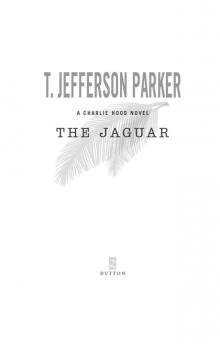 The Jaguar
The Jaguar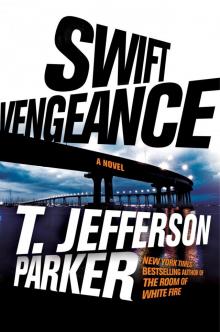 Swift Vengeance
Swift Vengeance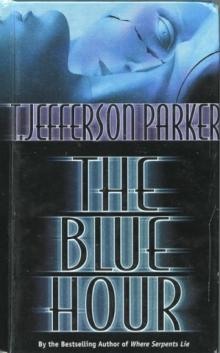 THE BLUE HOUR
THE BLUE HOUR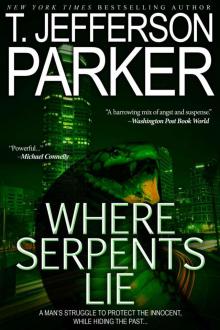 Where Serpents Lie (Revised March 2013)
Where Serpents Lie (Revised March 2013)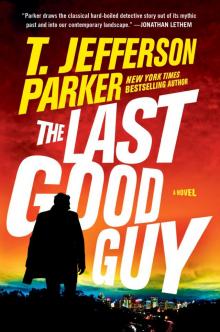 The Last Good Guy
The Last Good Guy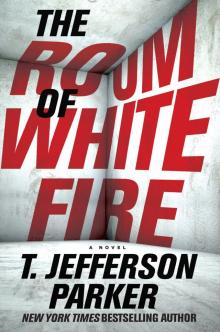 The Room of White Fire
The Room of White Fire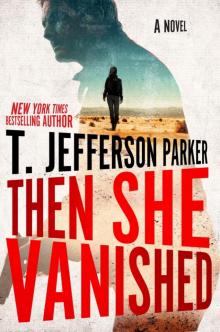 Then She Vanished
Then She Vanished The Border Lords
The Border Lords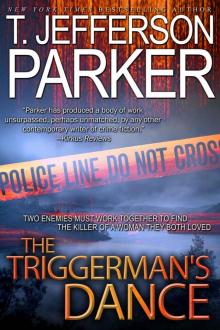 The Triggerman's Dance
The Triggerman's Dance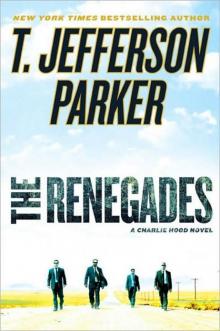 The Renegades
The Renegades Silent Joe
Silent Joe Iron River
Iron River Red Light
Red Light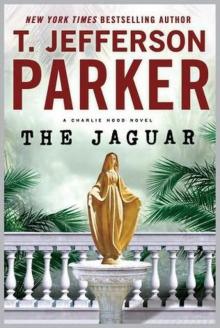 The Jaguar ch-5
The Jaguar ch-5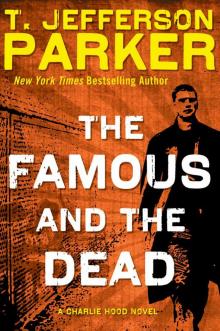 The Famous and the Dead ch-6
The Famous and the Dead ch-6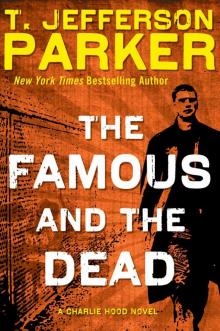 The Famous and the Dead
The Famous and the Dead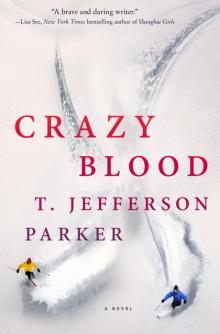 Crazy Blood
Crazy Blood Black Water
Black Water The Renegades: A Charlie Hood Novel
The Renegades: A Charlie Hood Novel Full Measure: A Novel
Full Measure: A Novel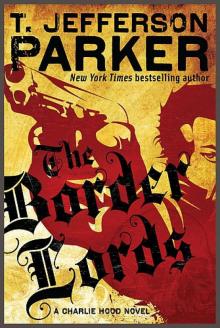 The border Lords ch-4
The border Lords ch-4 California Girl
California Girl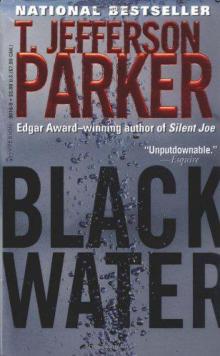 Black Water mr-3
Black Water mr-3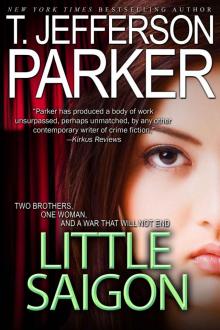 Little Saigon
Little Saigon L. A. Outlaws
L. A. Outlaws The Triggerman Dance
The Triggerman Dance Amazonia
Amazonia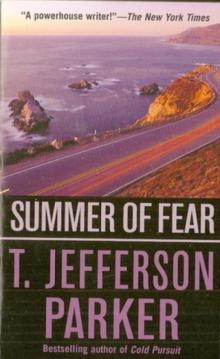 SUMMER of FEAR
SUMMER of FEAR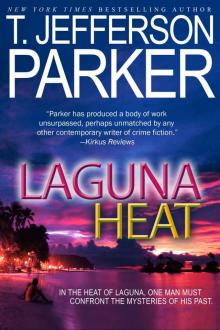 Laguna Heat
Laguna Heat The Renegades ch-2
The Renegades ch-2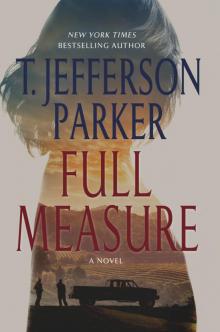 Full Measure
Full Measure